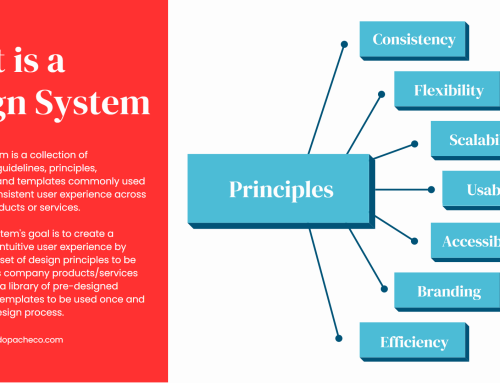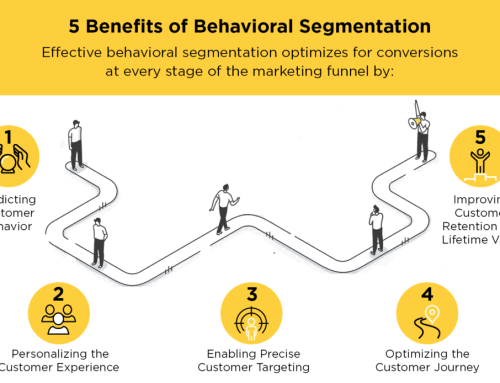Often abbreviated as CX, refers to the overall experience of a customer when it’s interacting with a company channel, product, or service.
Starting from the moment when they first become aware of the company and its products or services, to the point of purchase, and even after the purchase has been made.
It encompasses every touchpoint a customer has with a company, including their interactions with the company’s website, customer service representatives, and physical stores.
At its core, customer experience is about creating a positive, memorable, and seamless experience for customers that leaves them feeling satisfied and loyal to the brand.
This is important for businesses, as happy customers are more likely to make new purchases, recommend the company to others, and provide positive online reviews and ratings.
The concept of customer experience has gained importance in recent years, as companies have come to realize that simply providing a high-quality product or service is no longer enough to stand out in today’s highly competitive market.
With so many options available in the market to consumers, companies must go above and beyond to create a unique and enjoyable experience that sets them apart from their competitors.
To create a positive customer experience, companies must first understand the needs, challenges, expectations, and wants of their customers and design their products and services to meet these needs most effectively and efficiently as possible. This may involve conducting market research to gather customer feedback, analyzing customer behavior and data, and regularly reviewing and updating the company’s products and services to ensure they are meeting customer expectations.
In addition to designing products and services that meet customer needs, companies must also ensure that their customer-facing teams, such as sales and customer service representatives, are trained to provide a high level of service and support. This may involve providing employees with the tools and resources they need to effectively communicate with customers, resolve any issues or concerns, and provide timely and accurate information.
Furthermore, companies must ensure that their experiences should be consistent across all touchpoints, including the company’s website, physical stores, and customer service channels. This means that the customer should have a similar experience regardless of how they interact with the company and that their information and preferences are consistently carried over from one touchpoint to another.
In today’s digital age, companies must also pay attention to the online customer experience. This includes ensuring that the company’s website is easy to navigate, provides accurate and relevant information, and allows customers to easily find and purchase products and services. It may also involve managing the company’s online reputation, responding to customer reviews and feedback, and providing online support and assistance.
Stages of Customer Experience
The stages can vary depending on the specific business or industry, but generally, they include:
- Awareness: This is the first stage of the customer journey, where the customer becomes aware of a product or service and begins considering whether or not to purchase it.
- Research: In this stage, the customer gathers information about the product or service, such as its features, benefits, and price. They may also compare it to similar offerings from other companies.
- Consideration: At this stage, the customer has identified a need or want and is considering different options for meeting it. They may weigh the pros and cons of different products or services and determine which one is the best fit for their needs.
- Purchase: This is the stage where the customer decides to buy the product or service. They may do this online, in a store, or through a sales representative.
- Delivery: The product or service is delivered to the customer, either physically or digitally.
- Use: The customer begins using the product or service and may provide feedback on their experience.
- Loyalty: If the customer has a positive experience with the product or service, they may become a repeat customer and advocate for the company to others.
- Advocacy: In this final stage, the customer may recommend the product or service to friends, family, or colleagues, potentially bringing in new customers for the company.
Designing Customer Experience
- Identify the target audience: The first step in designing a useful customer experience is to identify the target audience for the business. This includes understanding the needs, expectations, wants, preferences, and behaviors of the customers the business is trying to reach.
- Define the customer journey: The customer journey refers to the series of interactions and touchpoints that a customer has with a company, from initial awareness to purchase and beyond. Defining the customer journey helps to identify the key points where the customer experience can be improved.
- Identify pain points and opportunities: Once the customer journey has been defined, the next step is to identify the pain points and opportunities for improvement. This may include areas where the customer experience is currently lacking, or where it could be enhanced.
- Develop a customer experience strategy: Based on the insights obtained through the previous steps, the next step is to develop a customer experience strategy that outlines the actions and initiatives that will be taken to improve the customer experience.
- Implement and test the customer experience strategy: Once the customer experience strategy has been developed, the next step is to implement it and test its effectiveness. This may involve making changes to products or services, improving customer service, or revising the overall design and usability of the company’s website or physical locations.
- Monitor and continuously improve: The final step in designing a useful customer experience is to continuously monitor and improve the customer experience based on feedback and data. This may involve making changes and adjustments to the customer experience strategy as needed to ensure that it is meeting the needs and expectations of the target audience.
Examples of Customer Experience
- Quick and efficient resolution of customer issues or complaints: A good experience includes timely and effective resolution of any problems or issues that a customer may have. This could involve providing a refund or replacement for a faulty product or addressing a concern with a service or experience. When customers feel that their issues are being addressed and resolved satisfactorily, they are more likely to feel satisfied and continue doing business with a company.
- Personalized and tailored recommendations or solutions: A good experience includes offering personalized recommendations or solutions that are tailored to the specific needs and preferences of the customer. This could involve offering customized product recommendations based on a customer’s past purchases or preferences or providing personalized service solutions that meet the specific needs of a customer. When customers feel that a company is taking the time to understand and address their individual needs, they are more likely to feel valued and satisfied.
- Proactive and preventative customer support: A good experience includes proactive and preventative support to help prevent problems or issues from occurring in the first place. This could involve offering regular maintenance or updates to products to keep them in good working order or providing resources and information to help customers avoid common issues or problems. When customers feel that a company is taking proactive steps to prevent issues from occurring, they are more likely to feel confident in their decision to do business with the company.
- Consistent and reliable service: A good experience includes consistent and reliable service across all touchpoints, whether it’s online, in-store, or over the phone. This means that customers should be able to expect the same level of service and support no matter how they choose to interact with a company. When customers feel that they can rely on a company to provide a consistently high level of service, they are more likely to feel satisfied and continue doing business with the company.
Overall, customer experience is about creating a positive and memorable experience for customers that leaves them feeling satisfied and loyal to the brand. By understanding the customer needs and designing products and services that meet those needs, providing high-quality service and support, and ensuring a consistent and seamless experience across all touchpoints. Companies can create a positive customer experience that sets them apart from their competitors and drives customer loyalty and repeat business.
Finally, there is interesting information you could read to learn more about this topic:






Leave A Comment